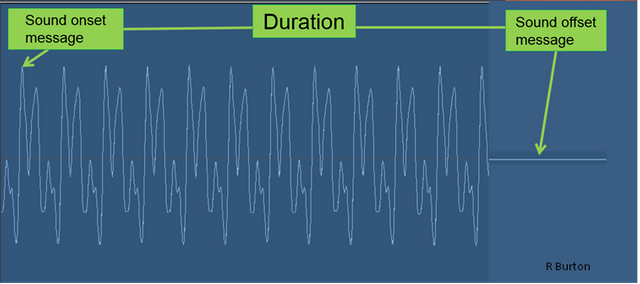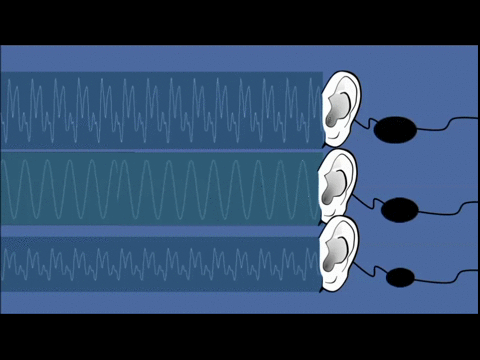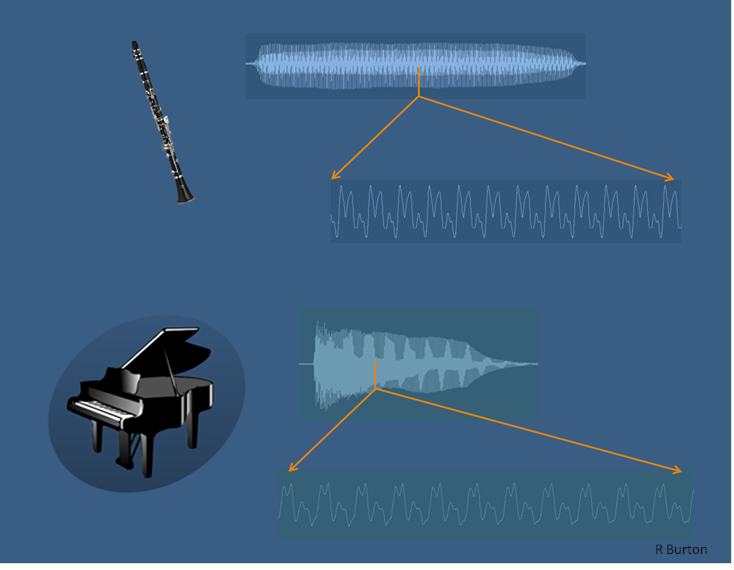The Production and propagation of sound waves and sound detectors
Sound is a plane longitudinal wave which can only propagate through material media or sound is term used to describe the form of energy which is transmitted in a fluid or solid medium and which produces a sensation that enters and is detected by the ear. The field of the media may be free or may have boundaries to interfere with its propagation.
Sound is said to propagate under free field conditions when there are no surfaces to influence it's motion and in such a field there are no reflection. This condition is not common in practice, rather it is usually simulated within certain limits by the echo-free. So therefore in a chamber of such name sound is made to vary like it should be under free field conditions within certain frequency ranges.

Image source: pixabay cco
Most sounds we encounter results from some mechanical vibrations. Which includes the ringing bell, the movement of the mouth and the beating of a drum. In some sources, there are no mechanical vibrations involved. Such sources are found in jet air flows, ducts and pipes where the sound produced results from fluid-velocity mixing. Energy is transferred from one particle to another while sound requires a medium to propagate, and results in being simply the molecular transfer of motional energy, capable of traveling through any medium.
Sound waves are generally referred to as compression waves. And this is because as the atoms or molecules of a medium are displaced, form their normal positions, internal elastic restoring forces of stiffness arise. These forces as well as the system inertia enable the particles of the medium to exhibit oscillatory motions and therefore transfer energy. So at any given time, the particles of the medium are alternately bunched together and spread apart in all directions around the sources as far as the wave has propagated.

image source: wikimedia commons
VELOCITIES IN SOUND WAVES
The speed with which a wave travels in a medium is determined by the quickness with which the molecules transfer energy from one form to another. This quickness is in turn determined by the strength of the force among molecules. These forces are characterised by the elasticity and density of the medium, as well as the surface tension and gravitational forces.
These characteristics makes the speed of sound differ in air, water and solid. When disturbances are large, other factors such as phase, attenuation and absorption affect the forces and therefore the velocity of sound as well. And this velocity is the speed with which each wave crest travels and also the speed of the movement of the phase position of the wave.
SOUND SOURCES AND DETECTORS
Any material that can vibrate is capable of producing sound. There are many possible sources of sound. The sources include mechanical, electrical, electroacoustic and electromechanical devices as well as human beings.
It was emphasized that sound is the outcome of mechanical vibration.
Detection of sound therefore will involve the conversion of these vibrations into the form that can be picked up to make sense. The ultimate detector of sound is the human ear, but there are non-human detectors which convert the natural sound into treated form for the purpose of processing e.g 🎤 microphone.

Image source: wikimedia commons
THE HUMAN EAR (SOUND DETECTOR)
The human ear is a unique sound detecting tool. It detects external sound well despite the fact that there are distractions around it. There are sounds of blood flow, those of heart beat, body movements and other internal organs. These distractions do not reduce it's efficiency. Apart from just detecting sound, the human ear does locate sound sources even in confused sound environments.
The human ear is divided into three different parts, the outer ear, the middle ear and the inner ear. The outer ear consists of the aerial pinna the air filled ear canal and the ear drum. The middle ear is made up of three bony structures malleus, incus and stapes called OSSICLES. The inner ear is liquid filled and is made up of the cochlea and auditory nerves.
Sound waves from outside are focused into the air filled ear canal and hence to the ear drum, a distance of about 25mm in the average adult. The ear drum is set into vibration by the sound waves which it then transmits to the ossicles. These bony structures then retransmit the waves mechanically to the oval window of the inner ear, having magnified the vibrations of the ear drum up to sixty times. The eustachian tube, and approximately 36mm long tube, ensures that pressure is equalised on both sides of the ear drum.
Sound now enters the inner ear by way of the oval window into the cochlea. The cochlea is in a spiral form and is divided into three parts by the Basilar membrane and Reiassner's membrane. The Basilar membrane supports the organ of Corti which contains some thirty thousand hair cells that end in about eighteen thousand nerve fibers. These convey the sound wave stimuli detected by the ear to the brain for interpretation.

Image source: Wikimedia commons
THE LOUDSPEAKER (SOUND SOURCES)
One electroacoustical source of sound is the loudspeaker. It is often mistaken for sound detector which it is not. Sound that has been modified by electronic systems is converted into sound by the loudspeaker. So therefore it converts one form of energy into another form and is called TRANSDUCER.
There are different types of loudspeaker, the electrostatic, the moving Iron and the moving coil. And most common type of loudspeaker is the moving coil.
It uses a permanent magnet surrounded by a current carrying coil connected to a diaphragm. The current of amplified signal fed to the coil makes it vibrates since it is also in the bar magnet. As it vibrates, so does the diaphragm to which it is connected and the motion of the diaphragm produces sound waves in the air.

image source: wikimedia commons
CONCLUSION
Sound waves are as a result of mechanical disturbances in materials. The speed of sound depends on the modulus which in turn depends on the molecular properties of the medium. Sound has wave velocity and which is proportional to the square root of the absolute temperature. As the wave travels, the particles of the medium oscillate. Sound detection involves the conversion of the mechanical vibrations made by objects into forms that permit the analysis of their frequency and intensity. Detectors include the human ear and the microphone. The latter converts natural sound energy into electrical one to facilitate sound amplification while the ear not only detects sound but also localizes the source.
REFERENCES
Dear friend, you do not appear to be following @wafrica. Follow @wafrica to get a valuable upvote on your quality post!